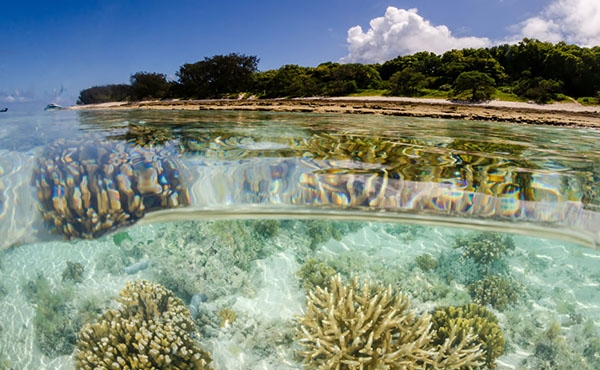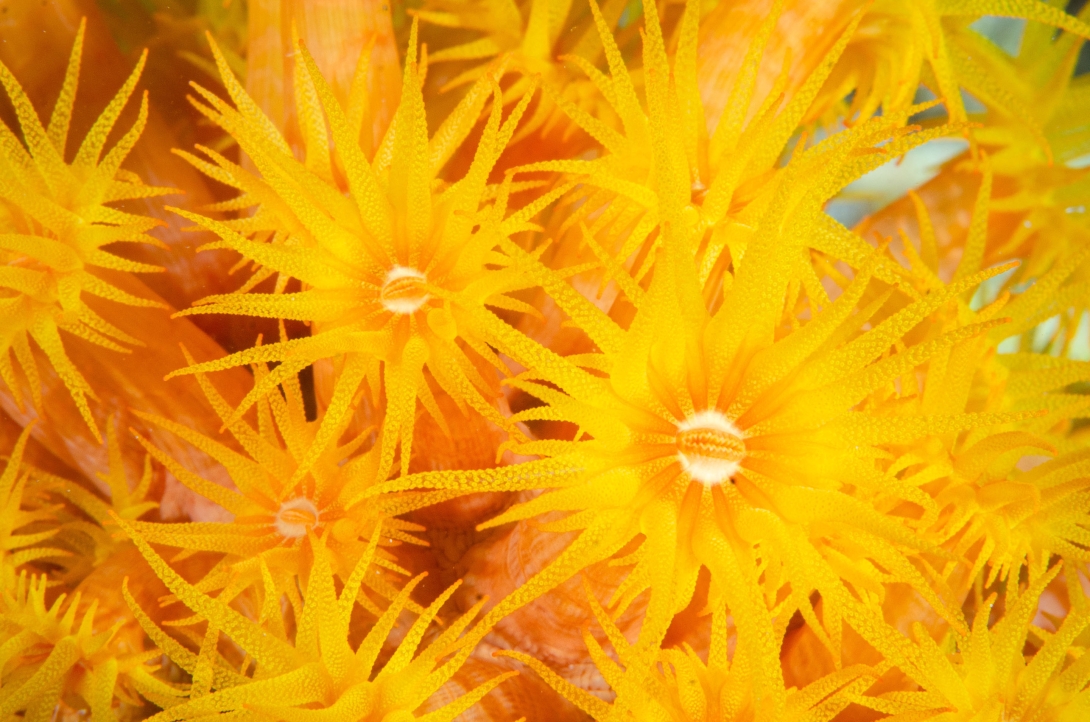Particle feeding is undertaken by a wide range of organisms that feed on plankton and dead organic matter from either the water column or sea floor. Particle feeders include worms and sea squirts that use mucous nets to adhere to particles; reef building corals, sea fans, feather stars, worms and some jellyfish that passively feed from passing water currents; bivalves, sponges and some barnacles that actively create currents to feed from; and baleen whales, manta rays and some fishes that are active particle feeders.787
Particle feeding octocorals (gorgonians, sea whips, sea pens and soft corals) are the second most common group of macrobenthic animals on the Reef after hard corals.318 Sponges have shown potential as a natural collection point for sampling environmental DNA.788 On a reef scale, it is estimated that sea cucumbers may bioturbate (turn over) 64,000 tonnes of sediment per year,789 which may partially buffer the impacts of ocean acidification through its contributions to reef biogeochemistry.772 A single oyster can filter more than 200 litres of sea water per day, and oyster beds play a vital role in coastal ecosystems.790 Particle feeding can assist corals under heat stress or in turbid waters. 772



